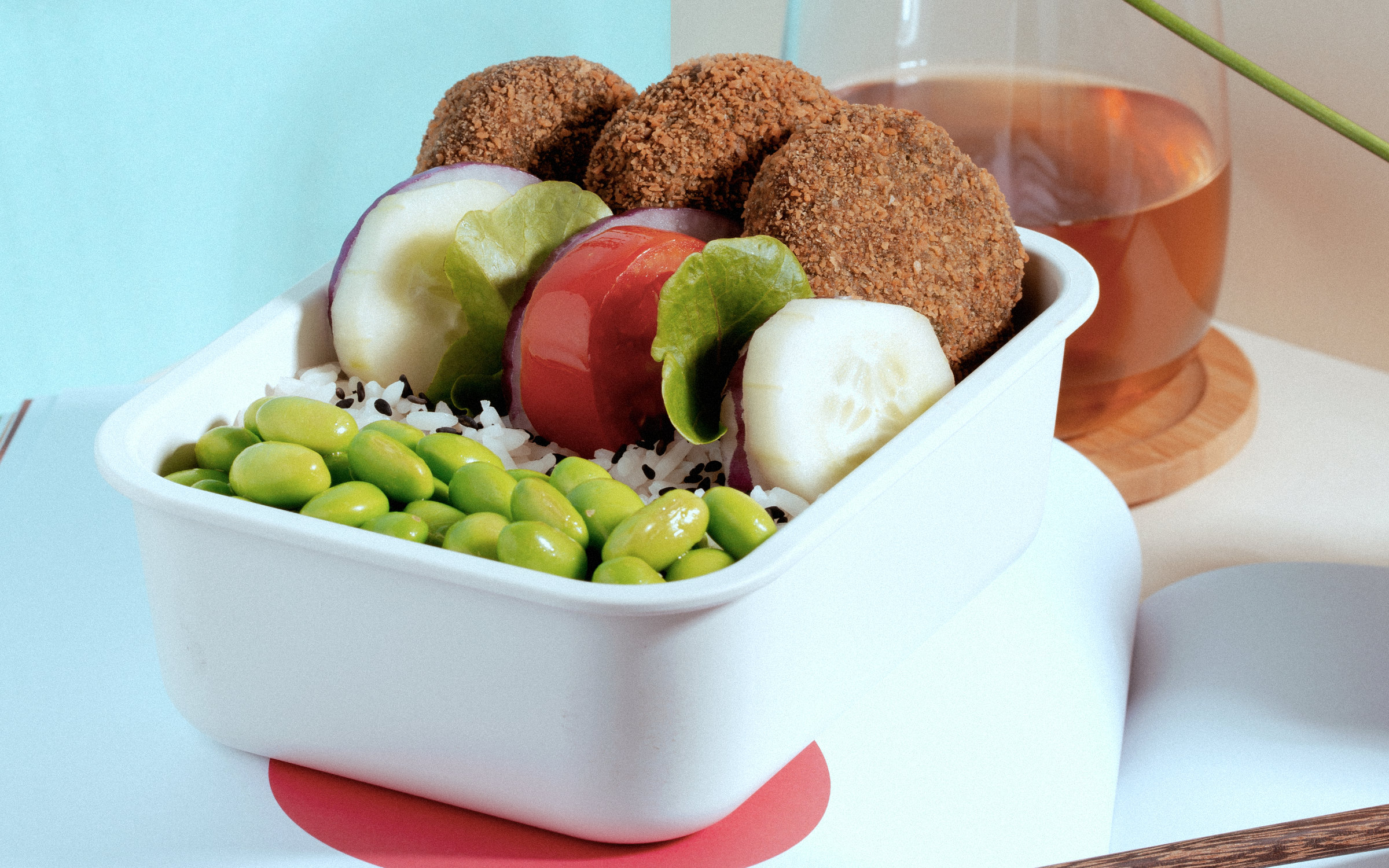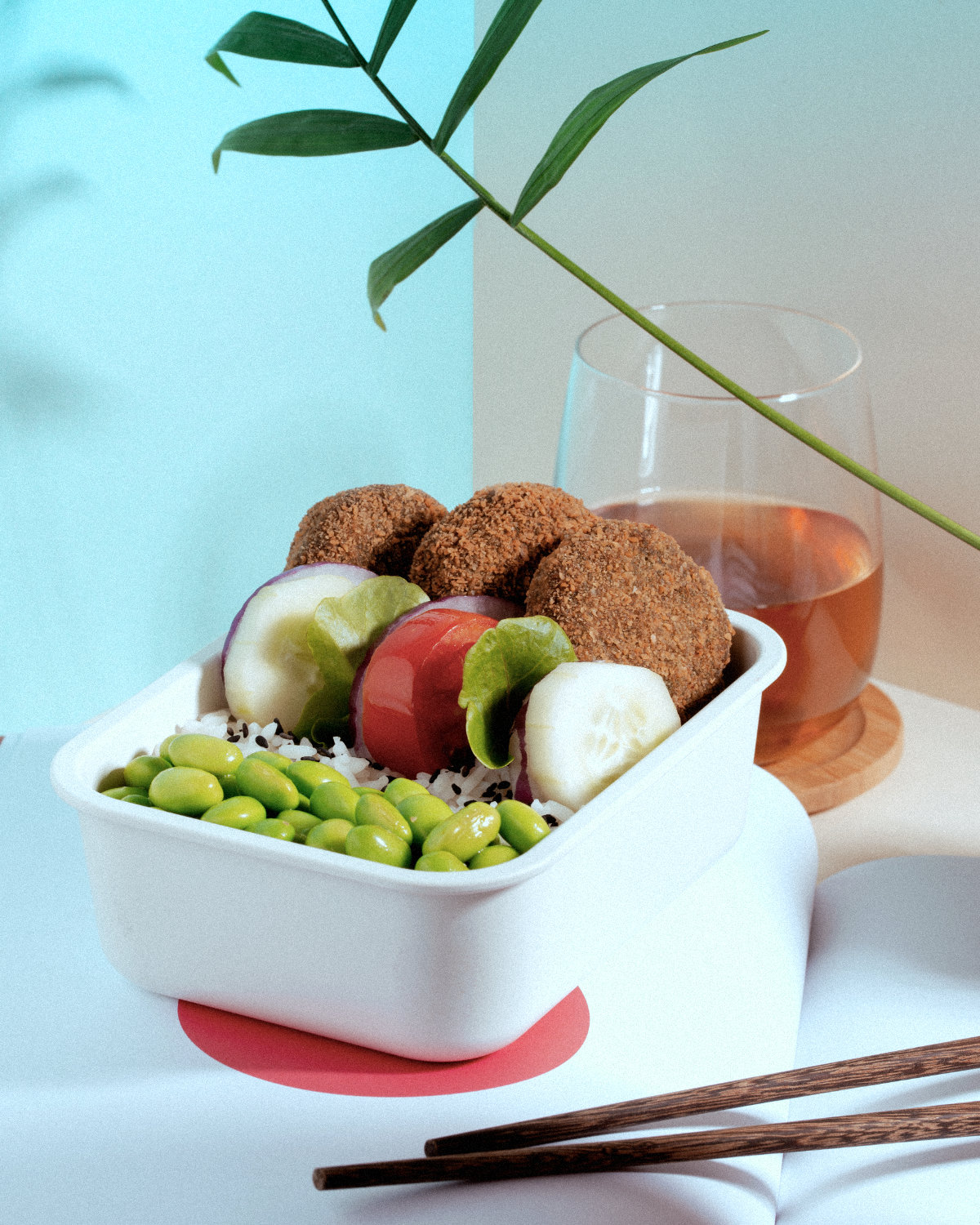The New Gastronome
Japanese Korokke
Lunchbox Issue
by Eleonora Badellino
by Eleonora Badellino

“Japanese Korokke” is a French-inspired dish (the name itself recalls the famous “croquette”), but what characterizes them and sets them apart from their French cousins is a potato filling stuffed with several different flavours (vegetables, meat, creamy or spicy… ). They are a homemade dish, loved by children and adults, and part of the recipes collected in the Yōshoku, the great cookbook that includes all the recipes with foreign derivations.
As Japanese Obentos usually consist of different components, I added a salad with Miso and Goma dressing. These two are widely used condiments in Japanese culture. While the first is well known as the base of famous recipes such as miso soup, sesame seeds have reached popularity thanks to their use in Buddhist cooking. Being a diet devoid of animal proteins, monks have always seen these seeds as an excellent supplement for their bodies. Since then, they have become a staple ingredient in Japanese cuisine, and you can find white and black sesame almost everywhere: sprinkled on plain white rice, as a topping for noodles, or in the form of broths.
My Bento box will also include pickled cucumber and tomato, using Tsukemono, the oldest and most successful preservation technique.
Finally, edamame and black sesame rice! If your child wants to help in the lunchbox-making process, in Japan, the first task for them to learn is washing and cooking rice – that’s where it all starts. So, if you want, get your kids involved and let’s start cooking a delicious meal to bring to work:
Curry Korokke (カレーコロッケ)

Ingredients:
2 medium potatoes
1/4 large onion
1 tbsp edamame or peas
1 tbsp boiled corn
1 tbsp butter
2 tsp curry powder
1 tsp salt
1 tsp pepper
1 egg
1/4 cup all-purpose flour
1 cup panko
oil for frying
Instructions:
Peel and cut the potatoes into bite-sized pieces, soak in water for 5 minutes, then drain.
Boil the potatoes until soft. Drain and let cool.
Finely chop the onions and sauté them in butter until browned. Set aside and let cool.
Mash the potatoes, then mix in the onion, peas, corn curry powder, salt, and pepper.
Divide into four equal portions, with slightly wet hands creating the classic oval shape of korokke.
Coat with flour, beaten egg, and bread crumbs.
Heat 2cm of salad oil in a pan to 170℃, add the raw korokke and fry until they reach a golden brown colour on the outside.
Remove the excess oil by placing them on cooking paper and serve on a finely shredded cabbage bed while they are still warm.
Salad with Goma & Miso Dressing
Ingredients:
1 tbsp white sesame
2 tbsp sugar
1 tbsp miso
1 tbsp water
Instructions:
In a bowl, mix all ingredients until blended. Store in a jar and keep in the fridge.
A. D V. E. R. T. I. S. I. N. G
Tsukemono 漬物: Pickled Cucumber & Tomato
Ingredients:
Instructions:
Once washed, cut the cucumbers into 10 mm thick rounds and the tomatoes in half.
Let the vegetables sit in salted water overnight. Once the time is up, drain them.
Add sugar, rice vinegar, and water to a saucepan and boil the liquid until the sugar is dissolved, then cool.
Place the cherry tomatoes and cucumber in a large jar and sprinkle them with the prepared liquid.
Let it sit for 1-2 days. Then they are ready to eat!
炊きご飯 Edamame, Black Sesame Rice
When I talk about rice, I refer to the Japonica variety, usually sold as Sushi Rice in Europe. It is a short rounded grain, thicker and harder than other types, which, once cooked, turns into a sticky consistency thanks to the high amylopectin content.
There are precise rules to obtain a bowl of rice with a soft and light consistency, whether you are going to use a rice cooker or a large pot:
1) The rice should be washed three times or at least until the water becomes clear.
2) After draining, add it to the rice cooker or to the pot you will use and cover it with water. Let it simmer for at least 30 min (1 hour would be even better). After the simmering period, start to cook it.
3) Do not salt the water, stir the rice during the cooking process, or open the lid until done.
Ingredients:
2 cups rice
180g boiled edamame
1 tbsp sake
1 tbsp mirin
1 tbsp soy sauce
360cl water
black sesame seeds
Instructions:
If you use a pot:
1.After washing and draining the rice, put it in a pot, together with all the other ingredients. Add the water, mirin, and edamame on top. Cover with a lid.
If you use a rice cooker:
2.Cook on a normal setting, and once ready, sprinkle with sesame seeds to taste.
The opinions expressed in the articles of this magazine do not necessarily represent the views of The New Gastronome and The University of Gastronomic Sciences of Pollenzo
Photos ©Aarón Gómez Figueroa. Styling ©Beatrice Guzzi